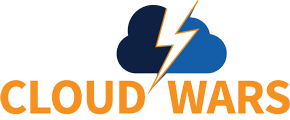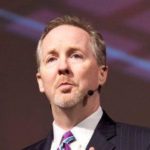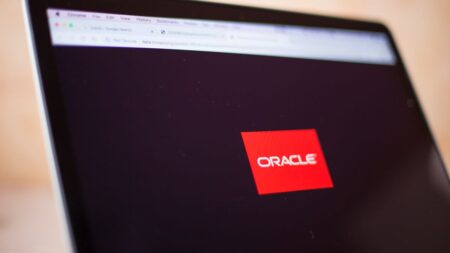The best way to understand where Oracle’s headed is to listen to what Larry Ellison says. So it was fascinating to see the subtle but powerful shift he made late last week in specifying which of the company’s huge range of assets will determine whether Oracle succeeds or fails in the rapidly emerging cloud marketplace.
In Oracle’s earnings calls 6 months ago and 3 months ago, Ellison began his prepared remarks by saying with great precision that the company’s future was riding on two products: Cloud ERP, and Oracle Autonomous Database.
But in last week’s earnings call, Ellison dropped the references to those two specific products and instead broadened his “bet the company” statement to encompass the two sweeping businesses in which those specific products reside: Cloud Applications and Cloud Infrastructure.
Splitting hairs? I don’t think so—not by a long shot.
And toward the end of this column, I’ve excerpted Ellison’s precise language from the past 3 earnings calls so you can evaluate the changes for yourself.
Ellison always says exactly what he thinks, and here’s my interpretation of why he changed his language from (and these are my close paraphrases) ‘the future of the company rests on Cloud ERP and Autonomous Database’ to ‘the future of the company rests on our SaaS apps business and Cloud Infrastructure business.’
- While Oracle’s Cloud ERP business certainly continues to grow at impressive rates, it will continue to face significant competition from both SAP and Workday regardless of how consistently Oracle executives attempt to dismiss those competitors. Oracle has established itself as the early leader in Cloud ERP, but it’s by no means the runaway winner—and Workday and SAP’s cloud ERP businesses are growing even faster, although on smaller bases.
- Part of the strategic power of Oracle’s Cloud ERP business is the “attach rate” it’s displaying, whereby customers who’ve had a good experience with that set of SaaS apps then choose Oracle’s HCM suite and occasionally its CX suite as well. So while Oracle Cloud ERP is itself vital and important to the company, its deeper strategic significance is as the anchor tenant to Oracle’s vast array of applications. Overall, Salesforce is world’s largest SaaS provider with SaaS revenue in 2018 of more than $10 billion out of its total revenue of $13 billion (it doesn’t break out platform revenue).
- Over the past couple of quarterly earnings calls, Oracle has begun to cite the success of its vertical-industry applications, which it now says are on an $800-million annualized run rate. By focusing more on its entire applications business and less specifically on Cloud ERP, Oracle can showcase its capabilities in industry-specific applications as well as in horizontal suites.

Larry Ellison
- With Ellison’s shift in focus from the Autonomous Database product to the Cloud Infrastructure business, a couple of things come into play. The one I find most interesting is Oracle’s attempt to tie its one-of-a-kind self-driving Autonomous Database to the IaaS business rather than to its PaaS business, where databases are traditionally positioned. In fact, for years the traditional Oracle Database as a Service offering was the center of its PaaS business. But now that Oracle is trying to build on its tiny share in the huge IaaS market, it is placing the Autonomous Database within IaaS because that innovative new database will run only on Oracle’s own infrastructure—its so-called Gen 2 IaaS. So Ellison’s plan is this: if you want the powerful new Autonomous Database, you can have it, *but* you’ll need to also sign up for Oracle IaaS to run it.
- By talking about the broader category of Cloud Infrastructure rather than simply the Autonomous Database product itself, Ellison and Oracle are able to position themselves more broadly and more capably as a viable cloud-infrastructure provider, rather than just as the database powerhouse that the company’s been recognized as for decades.
- The unique positioning Oracle hopes to gain by including Autonomous Database as part of its IaaS offerings clearly differentiates Oracle from IaaS kingpin Amazon, fast-growing #2 player in IaaS Microsoft, and rejuvenated #3 player Google Cloud, which is now led by longtime Ellison protege Thomas Kurian.
So, strategic taxonomy aside, how did Oracle’s Cloud ERP and Autonomous Database do in Oracle’s fiscal Q3, which ended Feb. 28?
CEO Safra Catz said Cloud ERP revenue for the quarter grew in “the mid-30’s,” and CEO Mark Hurd said that Oracle’s two biggest SaaS suites—Fusion Cloud ERP and HCM—are now on a combined annualized run rate of $2.8 billion, meaning they combined for revenue of $700 million in the quarter.
In the previous quarter—not the year-earlier Q3, but in the Q2 immediately preceding this Q3—Oracle said the combined revenue for Fusion Cloud ERP and HCM was $650 million, indicating a very strong sequential quarter-to-quarter growth rate of about 7.6%.
For Autonomous Database, Ellison said, “The introduction of our Gen2 highly secure infrastructure, featuring the Oracle Autonomous Database, has been very well received. During Q3, we had nearly 1,000 paying Autonomous Database customers and over 4,000 active trials.”
While the company did not disclose revenue figures for Autonomous Database, Ellison said it is proving itself to be in these early days the most successful product launch in the company’s history.
*******************
RECOMMENDED READING FROM CLOUD WARS:The World’s Top 5 Cloud-Computing Suppliers: #1 Microsoft, #2 Amazon, #3 Salesforce, #4 SAP, #5 IBM
Amazon Versus Oracle: The Battle for Cloud Database Leadership
As Amazon Battles with Retailers, Microsoft Leads Them into the Cloud
Why Microsoft Is #1 in the Cloud: 10 Key Insights
SAP’s Stunning Transformation: Qualtrics Already “Crown Jewel of Company”
Watch Out, Microsoft and Amazon: Google Cloud CEO Thomas Kurian Plans To Be #1
The Coming Hybrid Wave: Where Do Microsoft, IBM and Amazon Stand? (Part 1 of 2)
Oracle, SAP and Workday Driving Red-Hot Cloud ERP Growth Into 2019*********************
So: does Ellison’s evolving language really matter? Take a look for yourself, starting with what he said 6 months, then his comments from 3 months ago, and then from last week.
Excerpt from Ellison’s opening comments on Q1 earnings call on Sept. 17, 2018: “Oracle has two strategic products that will determine our future. Our Cloud ERP product is the strategic key to our success in the SaaS applications layer of the Cloud. And our Autonomous Cloud Database is the strategic key to our success in the IaaS or infrastructure layer of the Cloud.”
Excerpt from Ellison’s opening comments on Q2 earnings call on Dec. 17, 2018: “Oracle has two strategic products that will determine the future of our company: Cloud ERP and the Autonomous Database… But more than being simply the technology leader in ERP applications, the analysts also confirmed that Oracle has translated that technology leadership into market leadership in Cloud ERP, with nearly 6,000 Fusion ERP customers plus more than 16,000 NetSuite customers, and we’re adding about 1,000 new Cloud ERP customers every quarter.”
Excerpt from Ellison’s opening comments on Q3 earnings call on March 14, 2019. Note that not only does Ellison shift his focus from Cloud ERP to Oracle’s entire SaaS portfolio, but also he does not even mention Cloud ERP: “Oracle’s future rests on two strategic businesses, Cloud Applications and Cloud Infrastructure. The growth in our Cloud Applications business has been driven by our Fusion suite and NetSuite. Both the Fusion suite of applications and NetSuite are growing very, very rapidly, and Mark gave you the numbers. Most customers want their cloud services provider to make their applications work together. Customers do not like to be responsible for the complex process of integrating lots of different applications, running on lots of different vendors’ clouds. We think our integrated suite approach to the Cloud Applications business is a primary reason for the very rapid growth in our Cloud Applications market share.”
Disclosure: At the time of this writing, Oracle and SAP are clients of Evans Strategic Communications.








